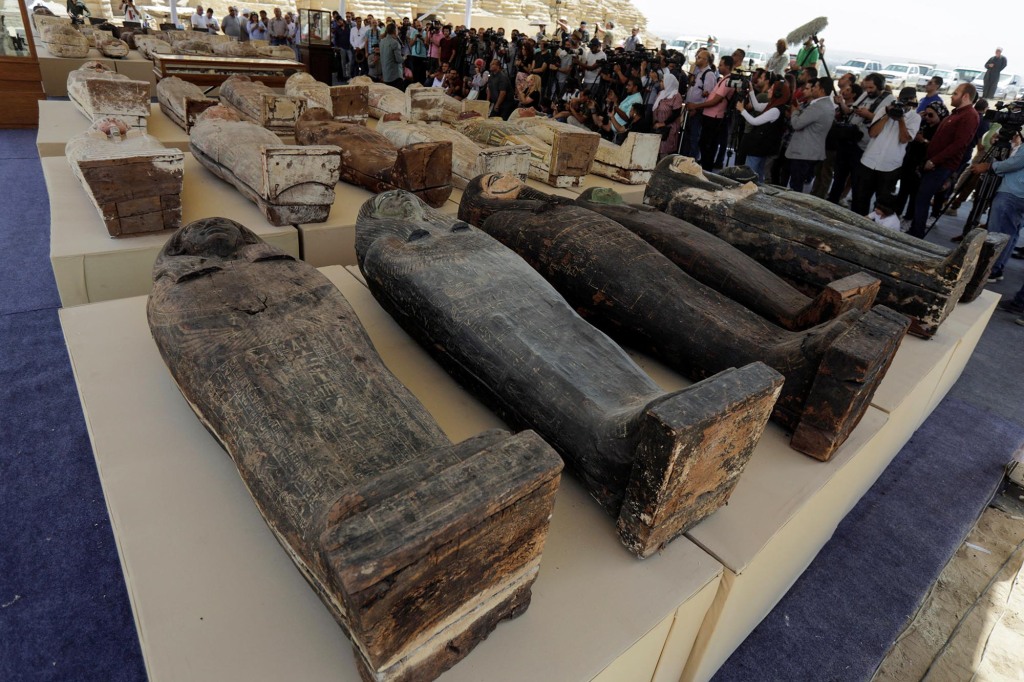Egypt unveils newly discovered 2,500-year-old artifacts
Egypt displayed Monday a cache of ancient artifacts dating back 2,500 years that the country’s antiquities officials revealed were recently discovered at the famed necropolis of Saqqara.
The artifacts were showcased at a temporary exhibit close to the Step Pyramid of Djoser in Saqqara, 15 miles from Cairo, the Egyptian capital.
Mostafa Waziri — head of the Supreme Council of Antiquities — said the trove includes 250 painted sarcophagi with mummies in good condition inside, 150 bronze statues of ancient deities, and bronze vessels used in rituals of Isis, the goddess of fertility in ancient Egyptian mythology, all from about 500 B.C.
Officials also presented a headless bronze statue of Imhotep — the head architect of Pharaoh Djoser who ruled ancient Egypt between 2630 B.C. and 2611 B.C.



“I’m very proud that the discovery was made by Egyptians, and this will not be the last discovery here,” Waziri said, according to a report.
The artifacts will be taken to a permanent exhibit at the new Grand Egyptian Museum — a project near the Giza Pyramids on the outskirts of Cairo that is slated to open in September.
The Saqqara site is part of a sprawling necropolis at Egypt’s ancient capital of Memphis that includes the Giza Pyramids and the smaller pyramids at Abu Sir, Dahshur and Abu Ruwaysh. In the 1970s, the ruins of Memphis were designated a UNESCO World Heritage site.




The showcasing of the new findings comes after in March five well-preserved ancient tombs were unearthed in Saqqara. The Egyptian Ministry of Tourism and Antiquities said that the tombs are at least 4,000 years old.
Last year, a team of archaeologists in southern Egypt uncovered what may be the world’s oldest large-scale brewery that dates back more than 5,000 years.
With Post wires
Read the full article Here


